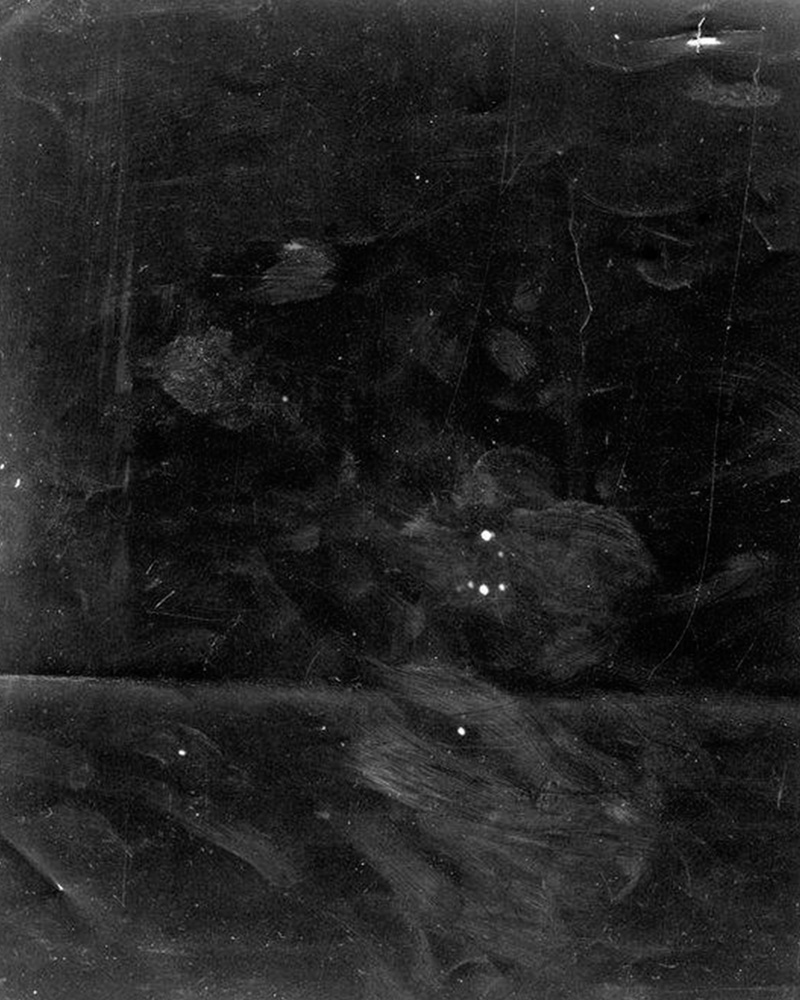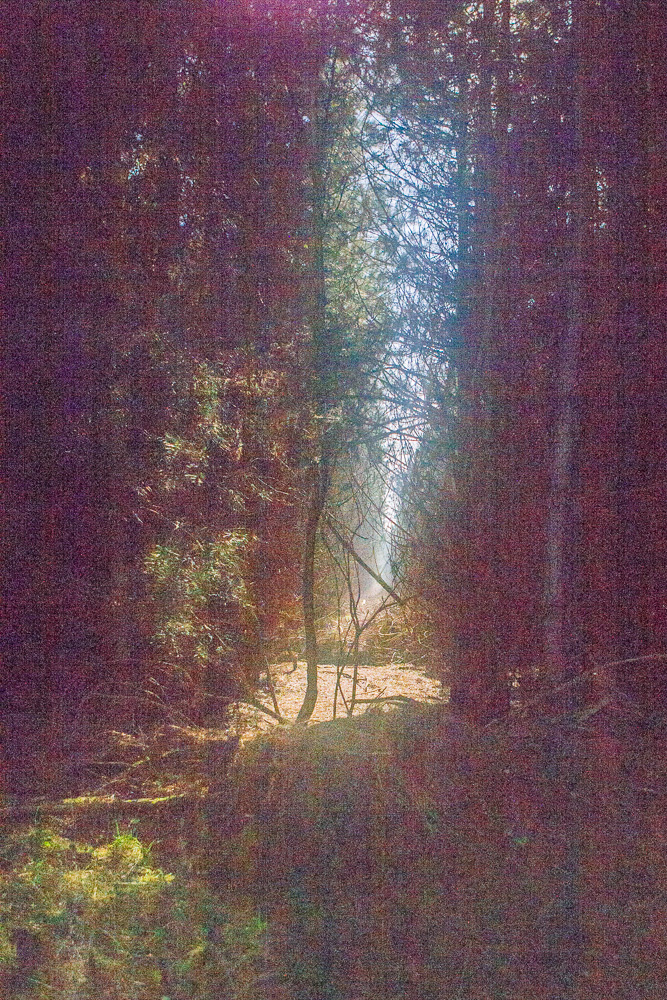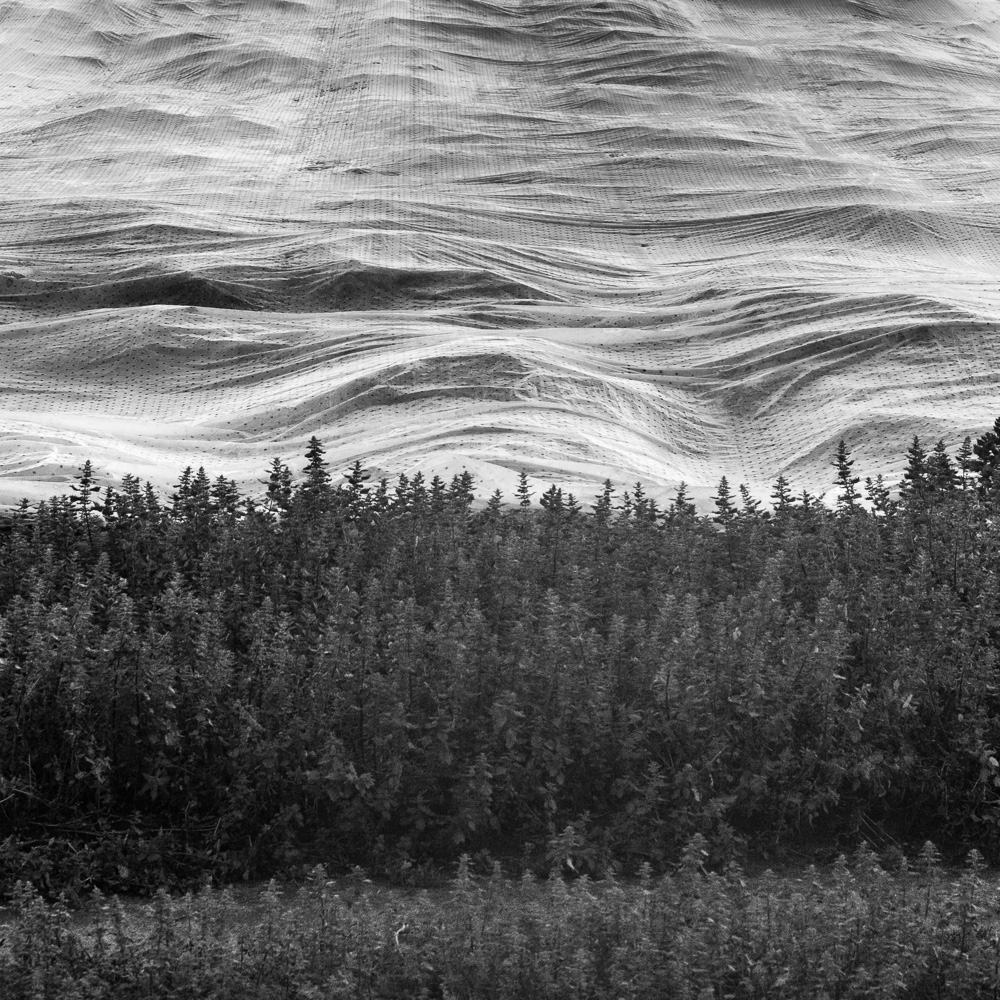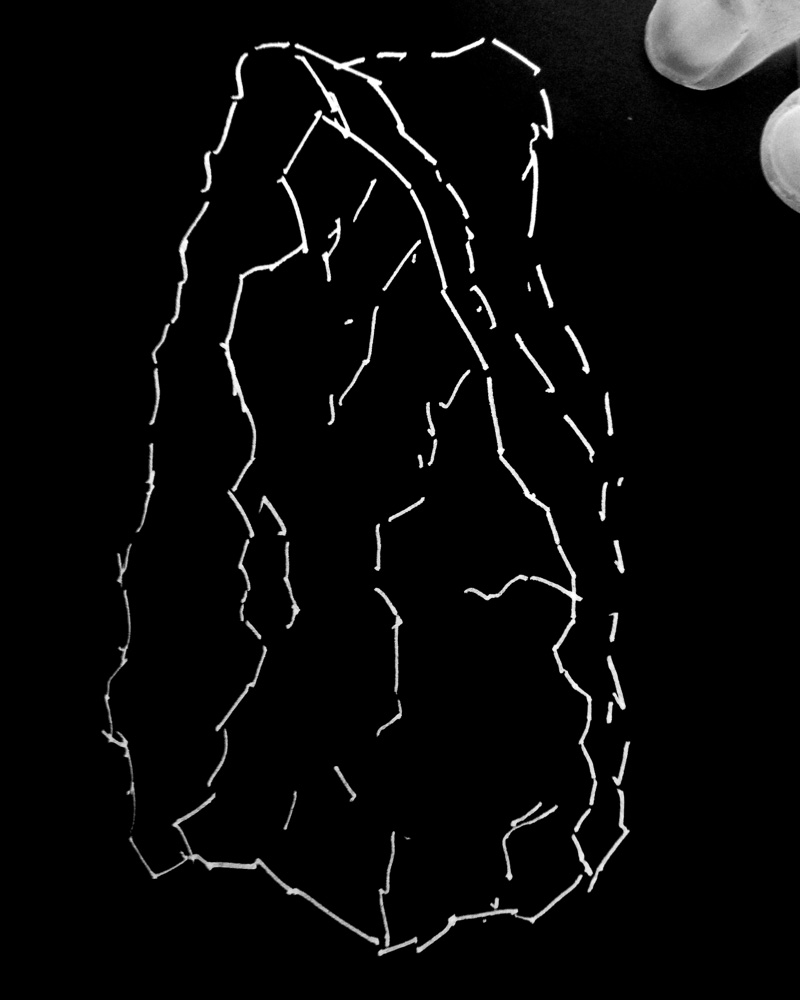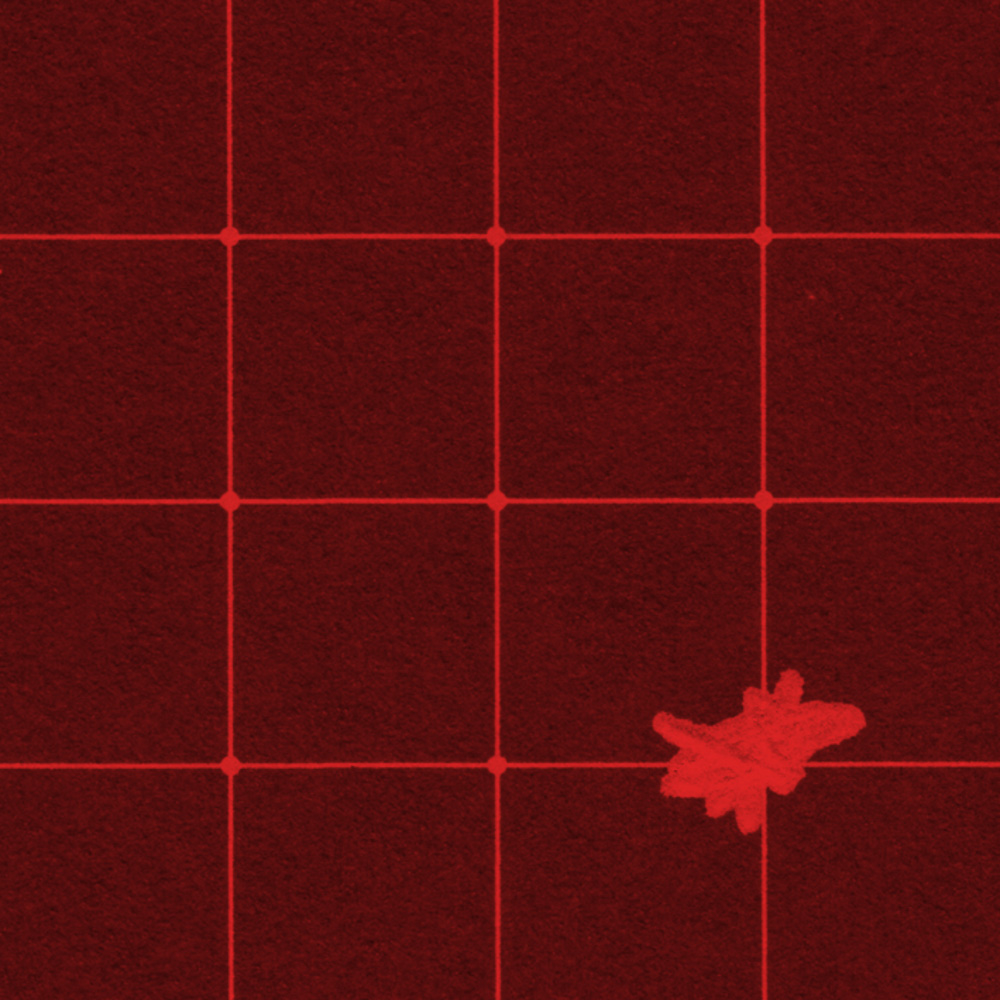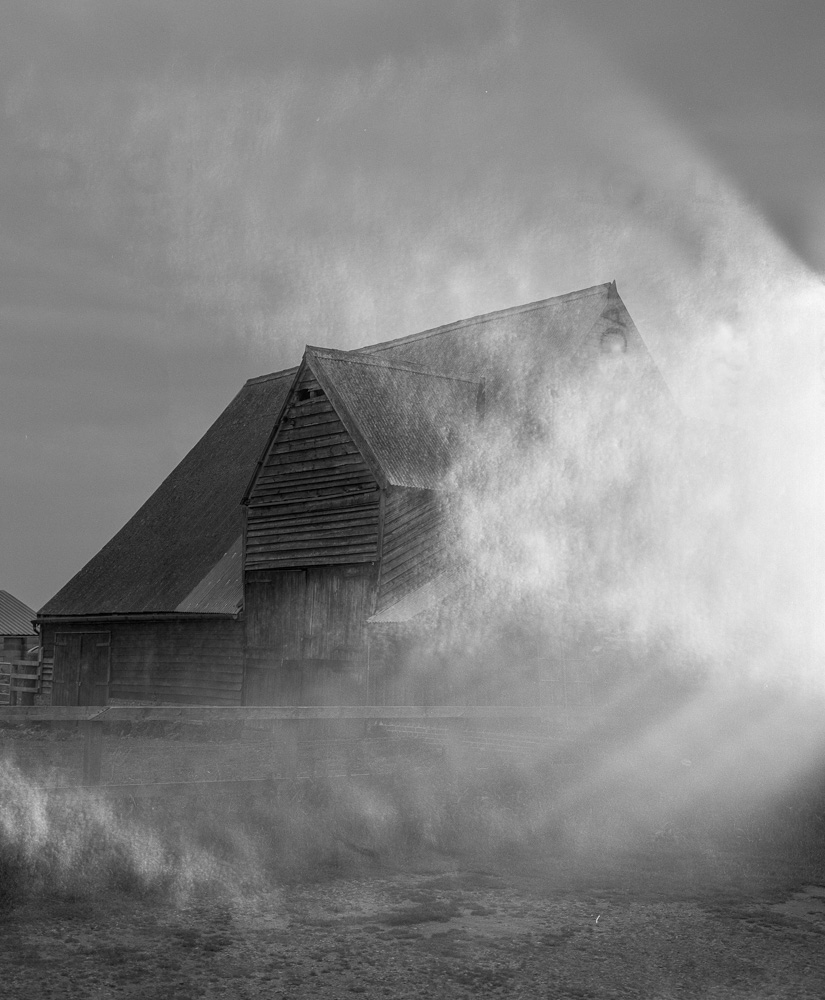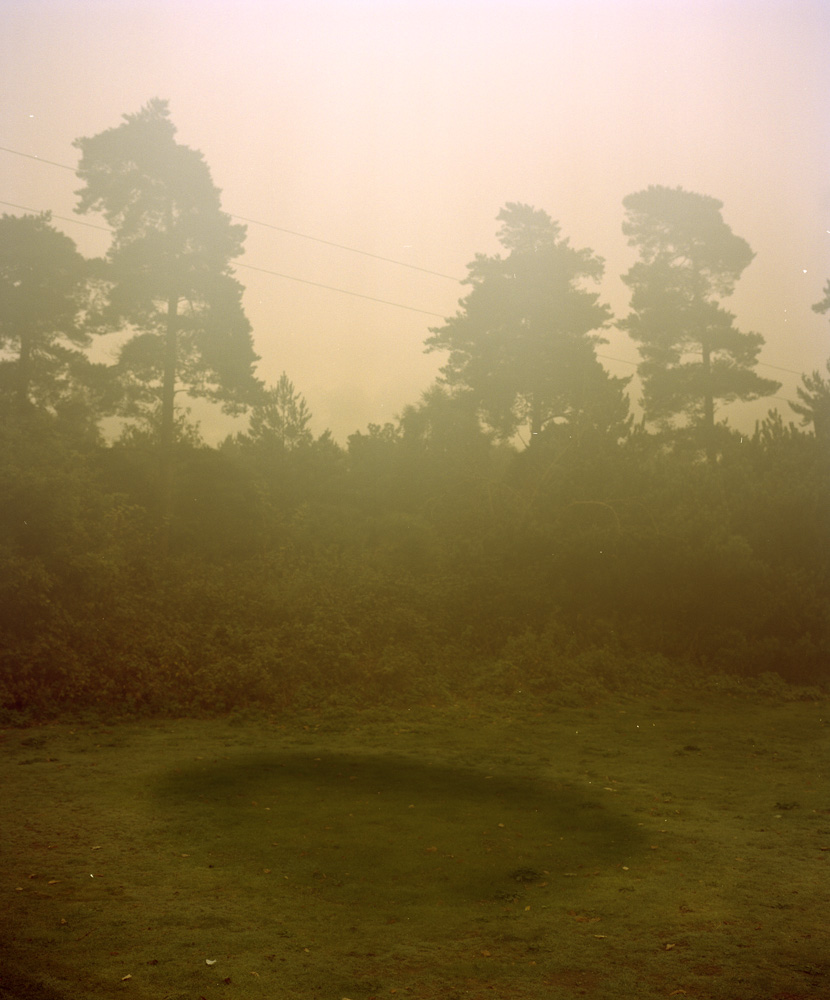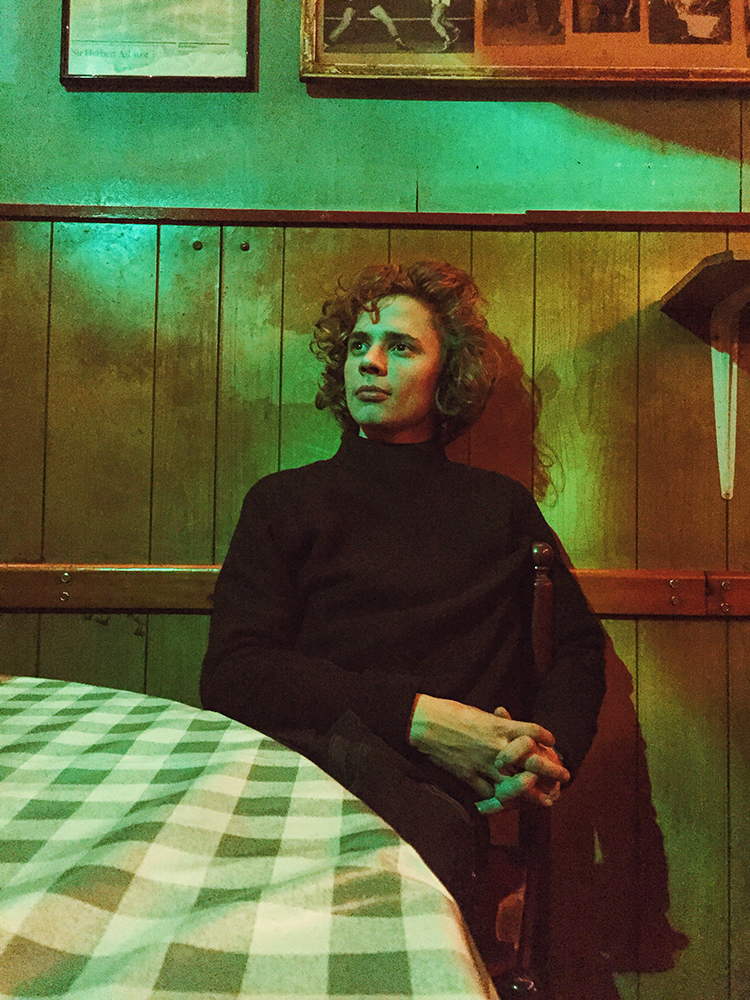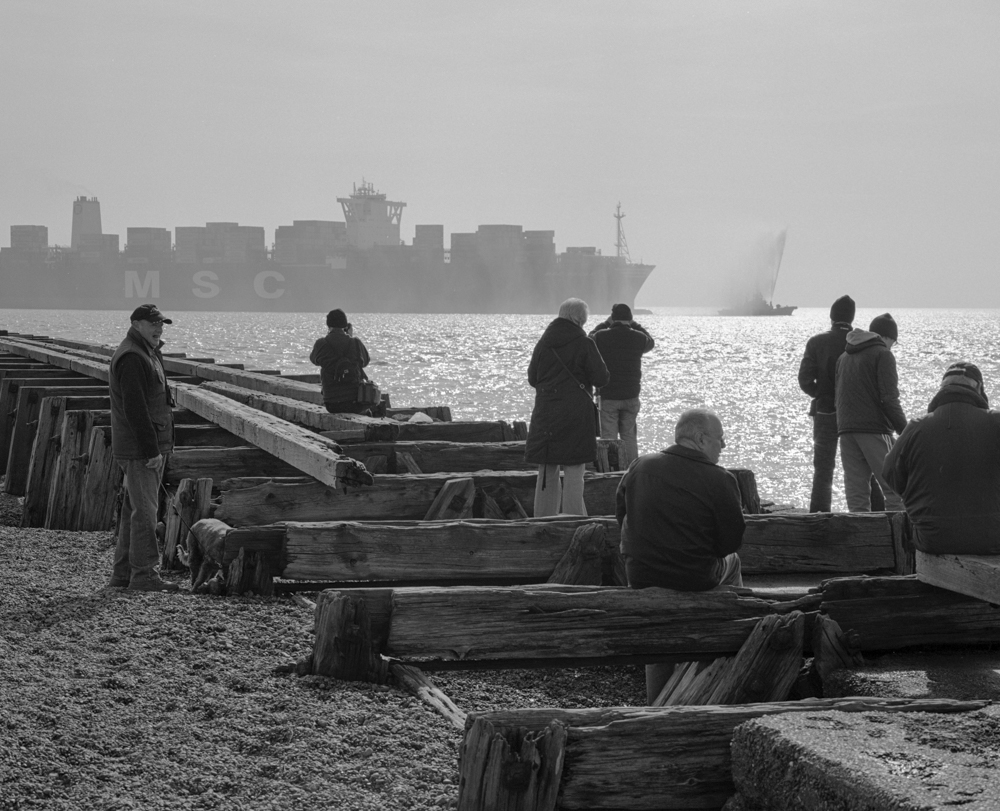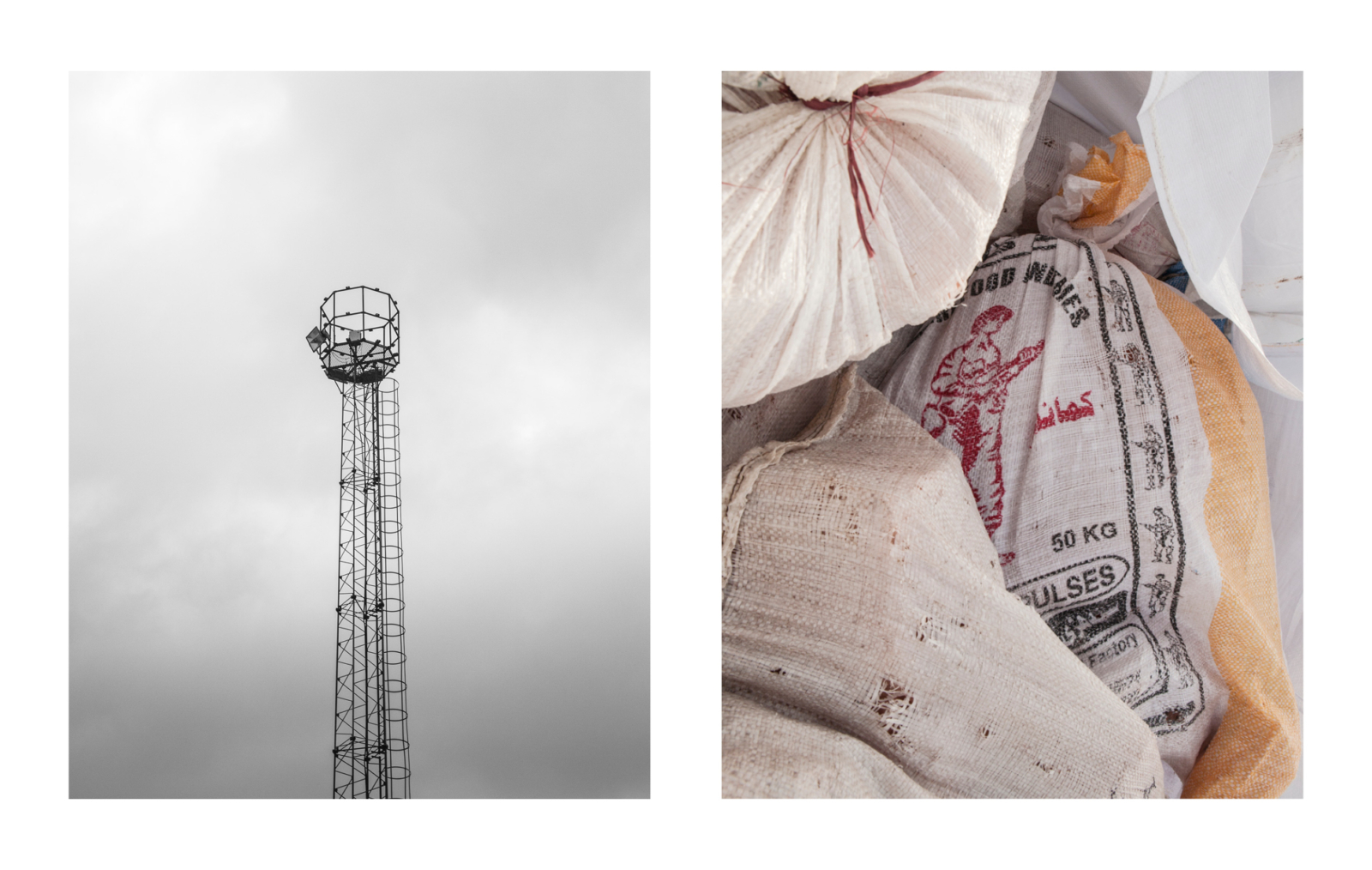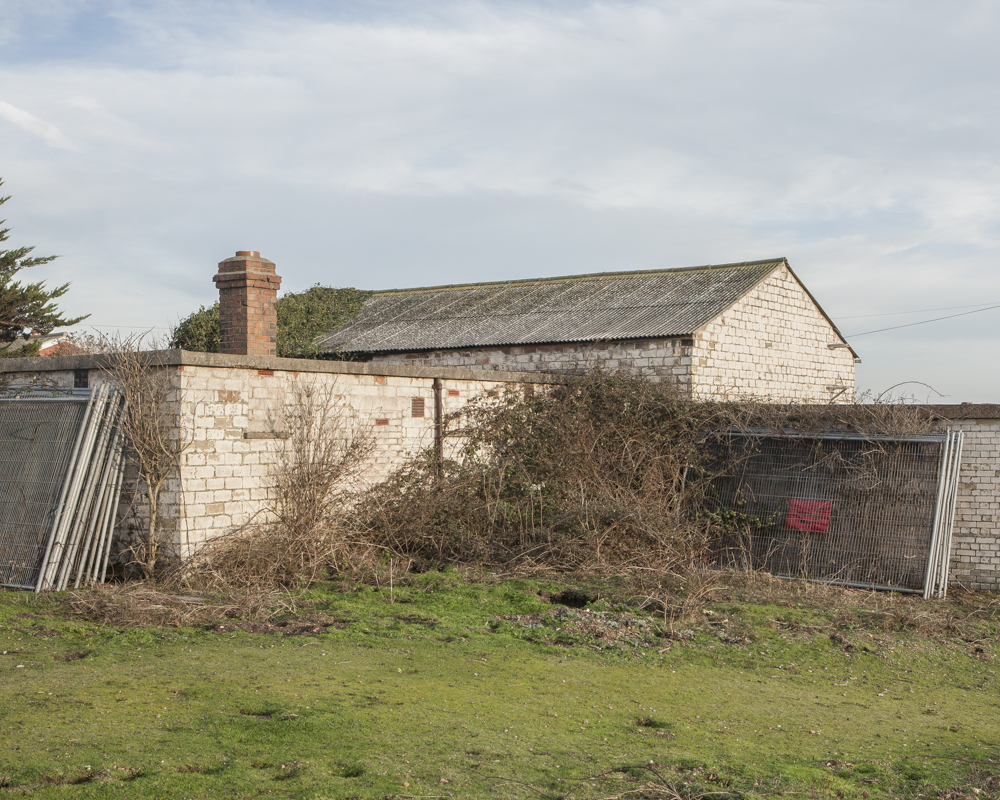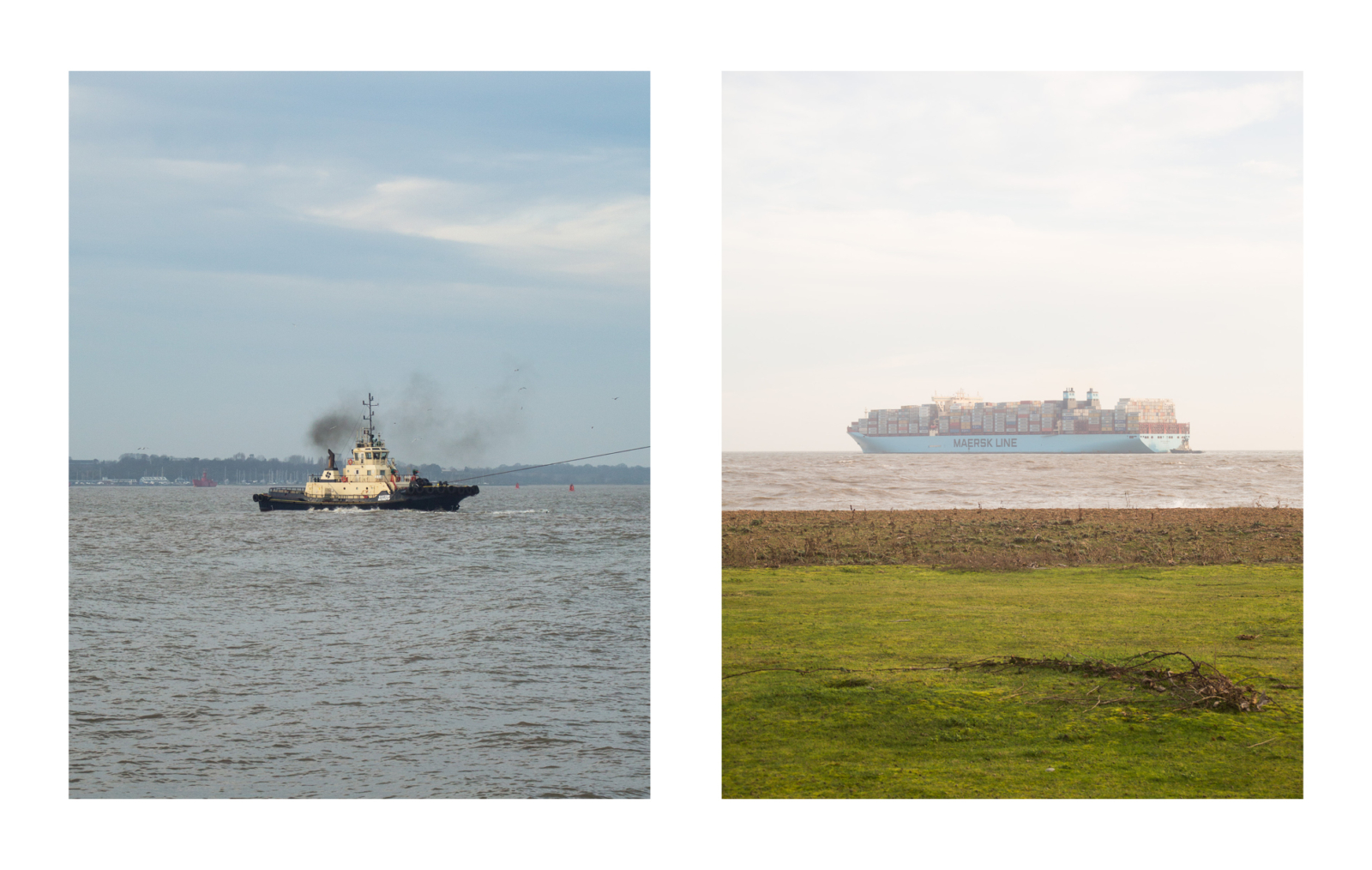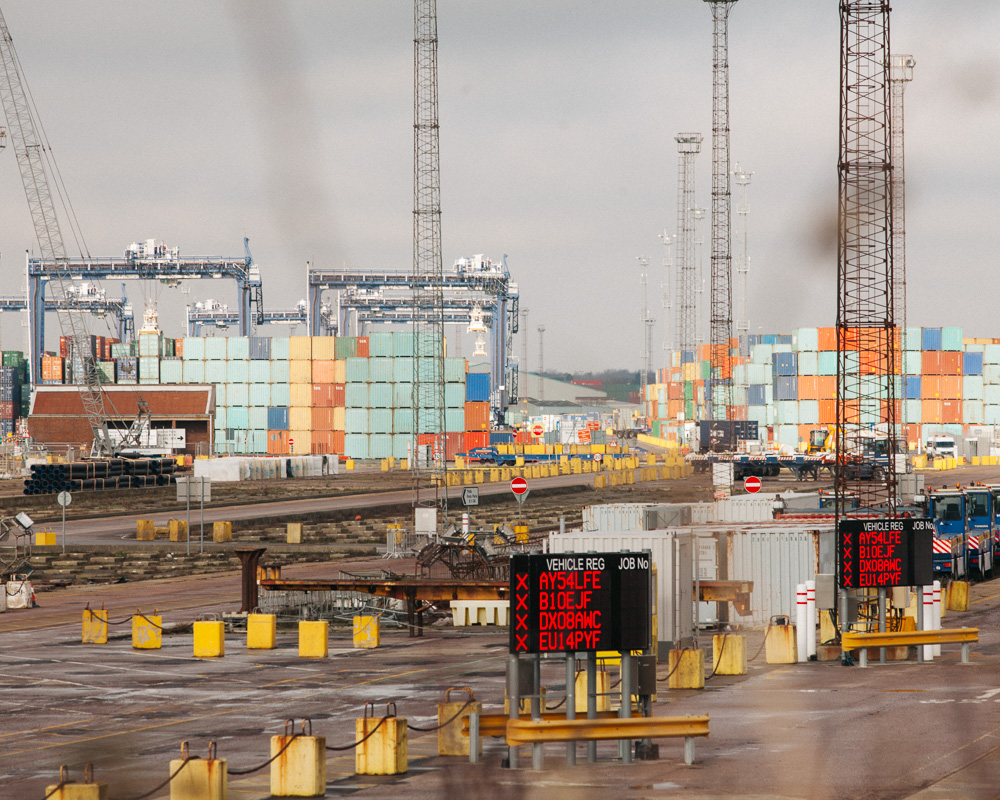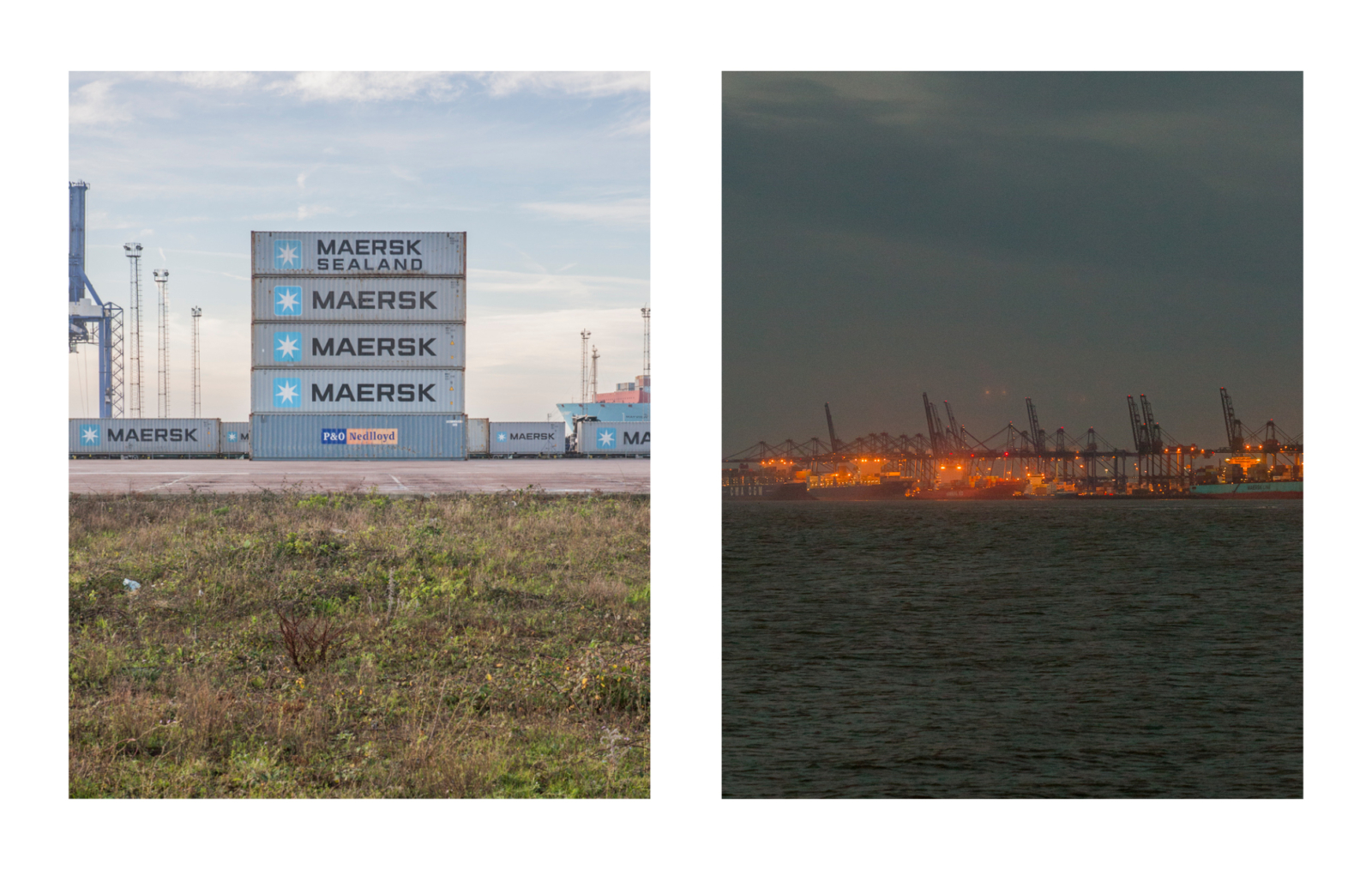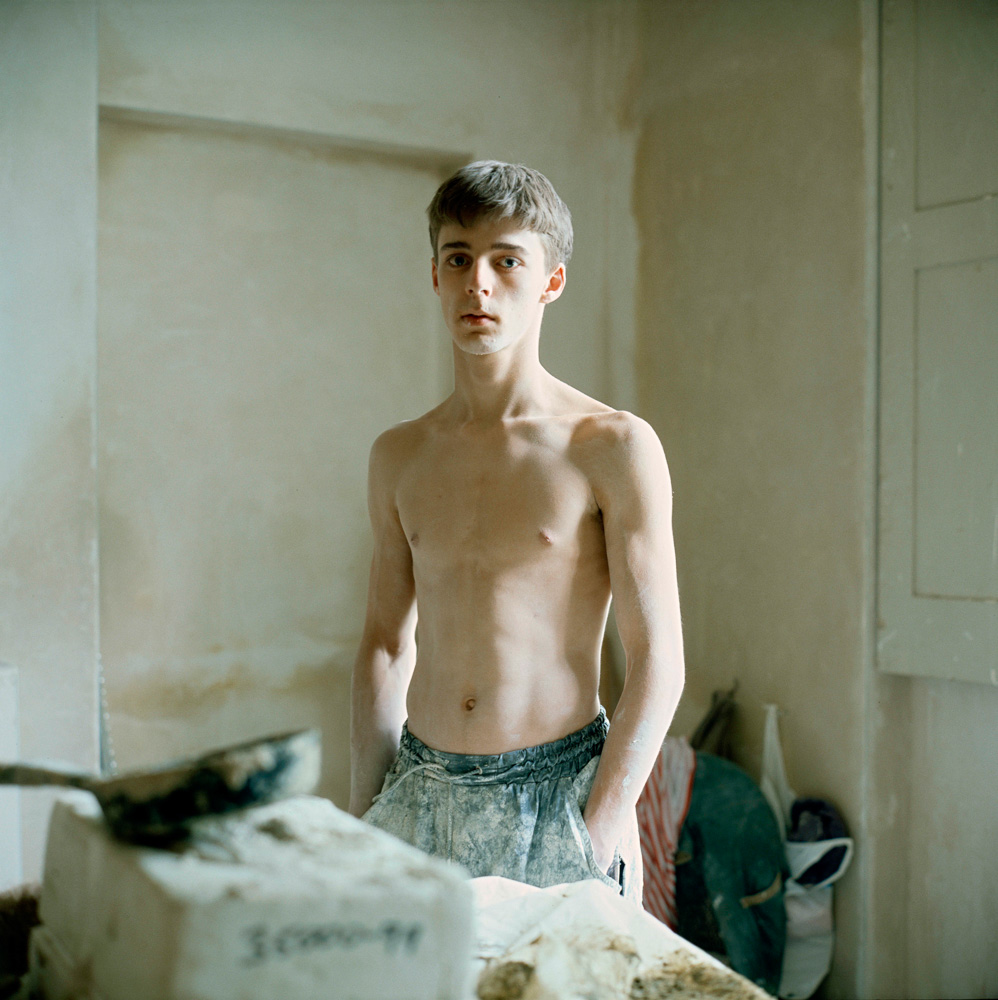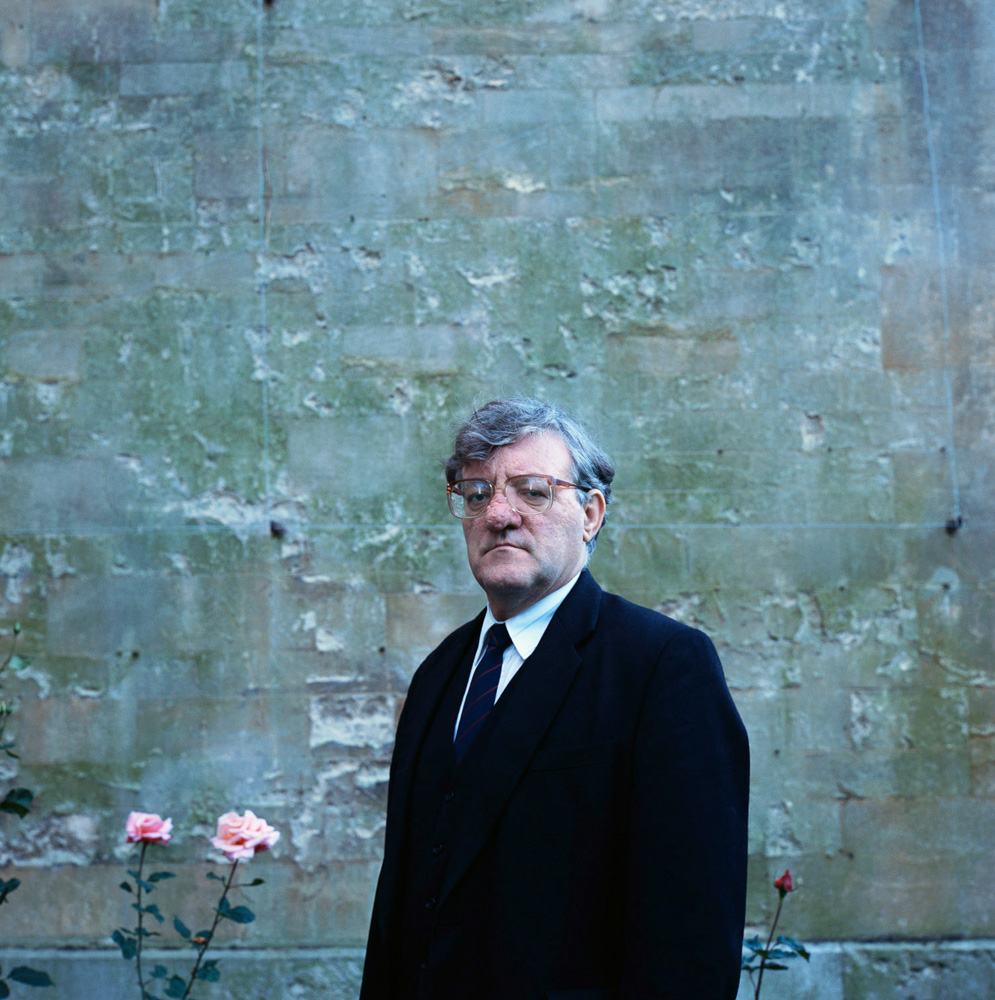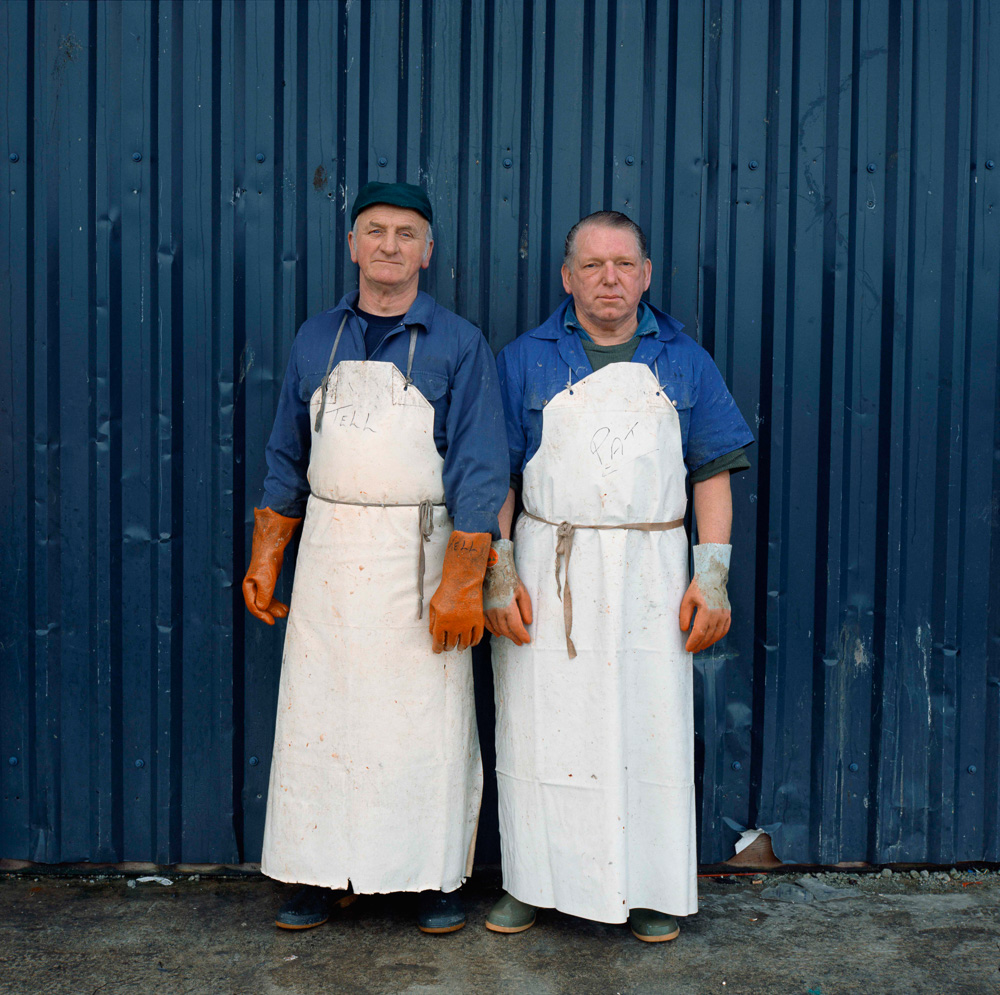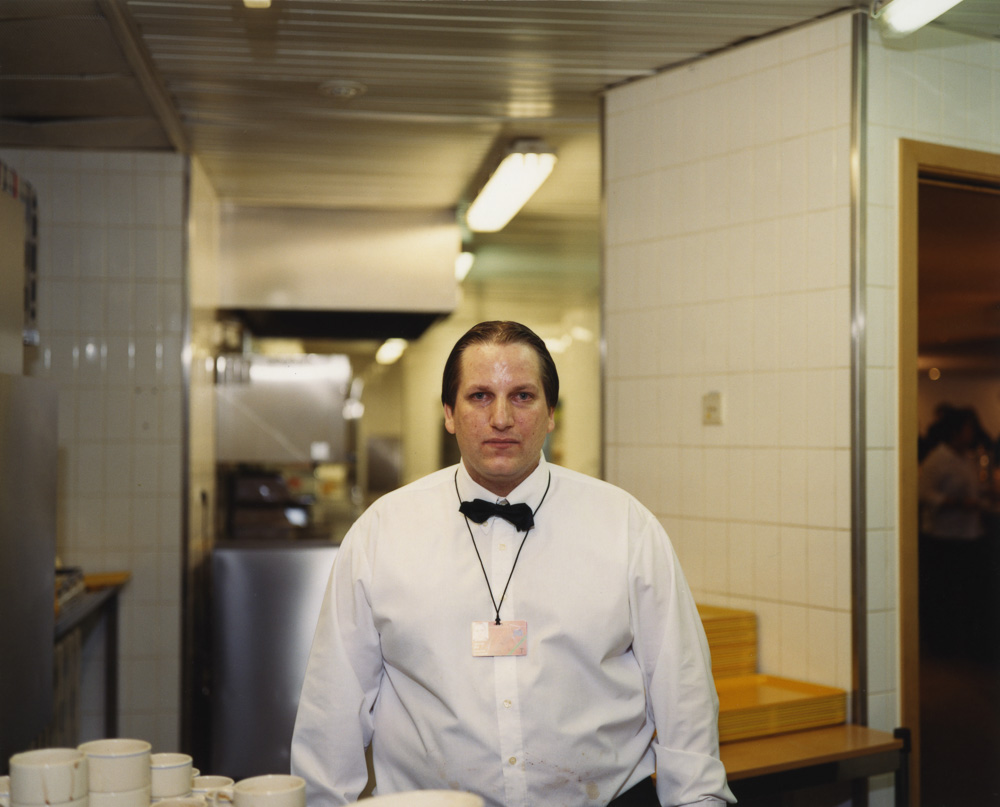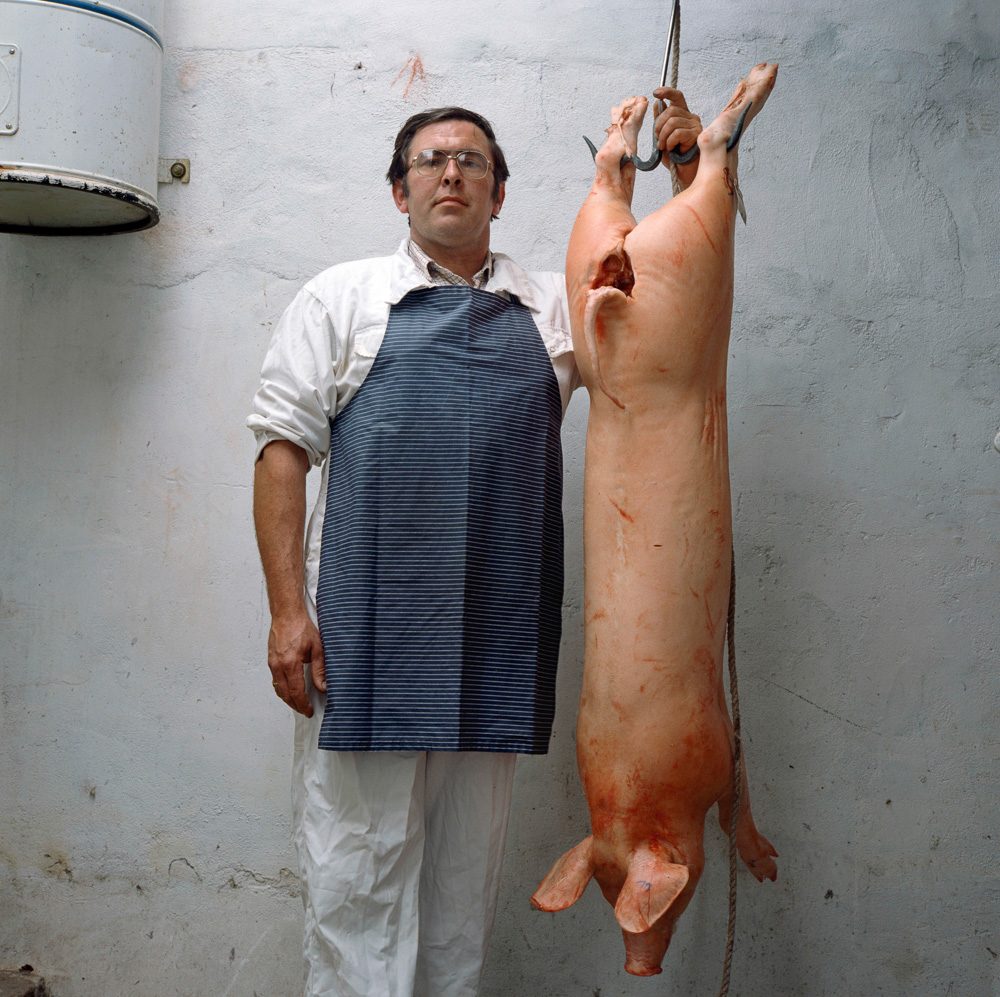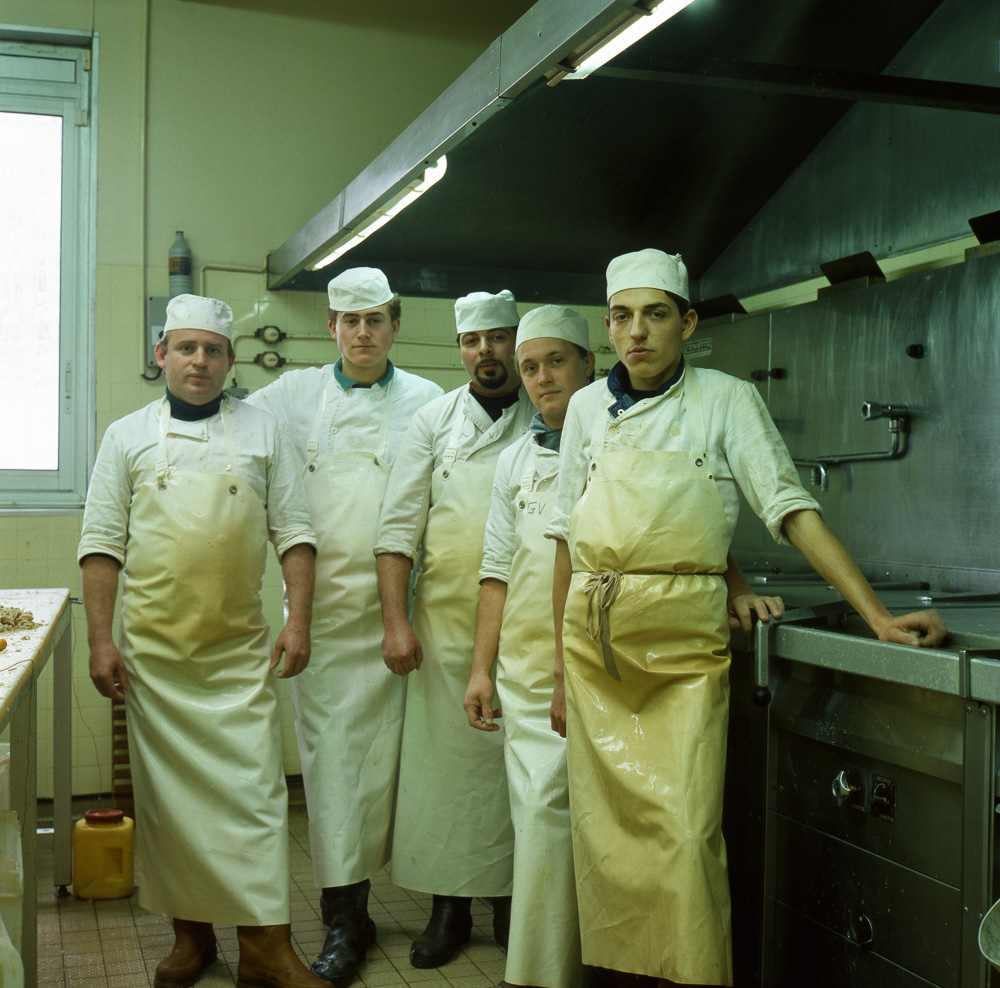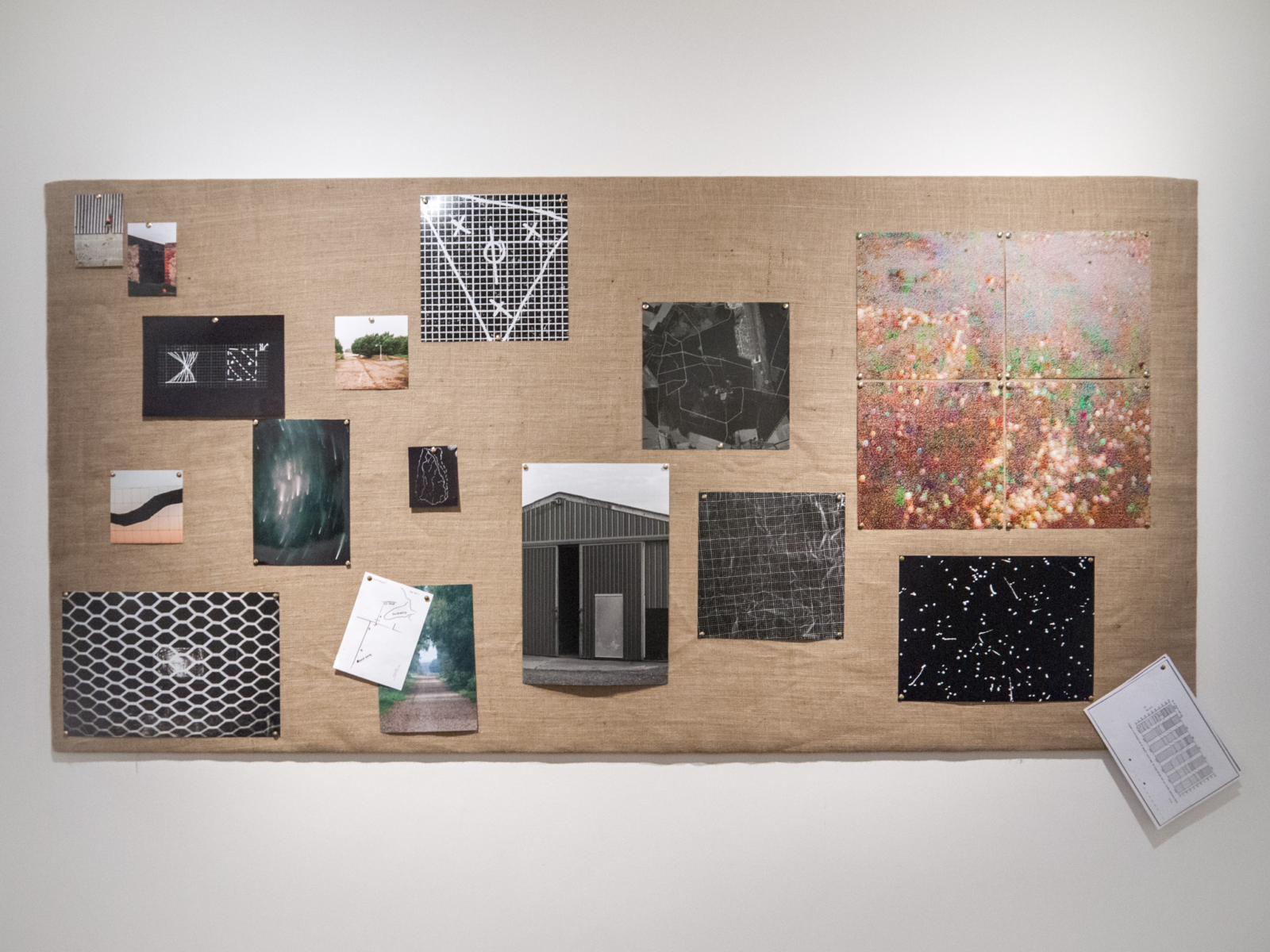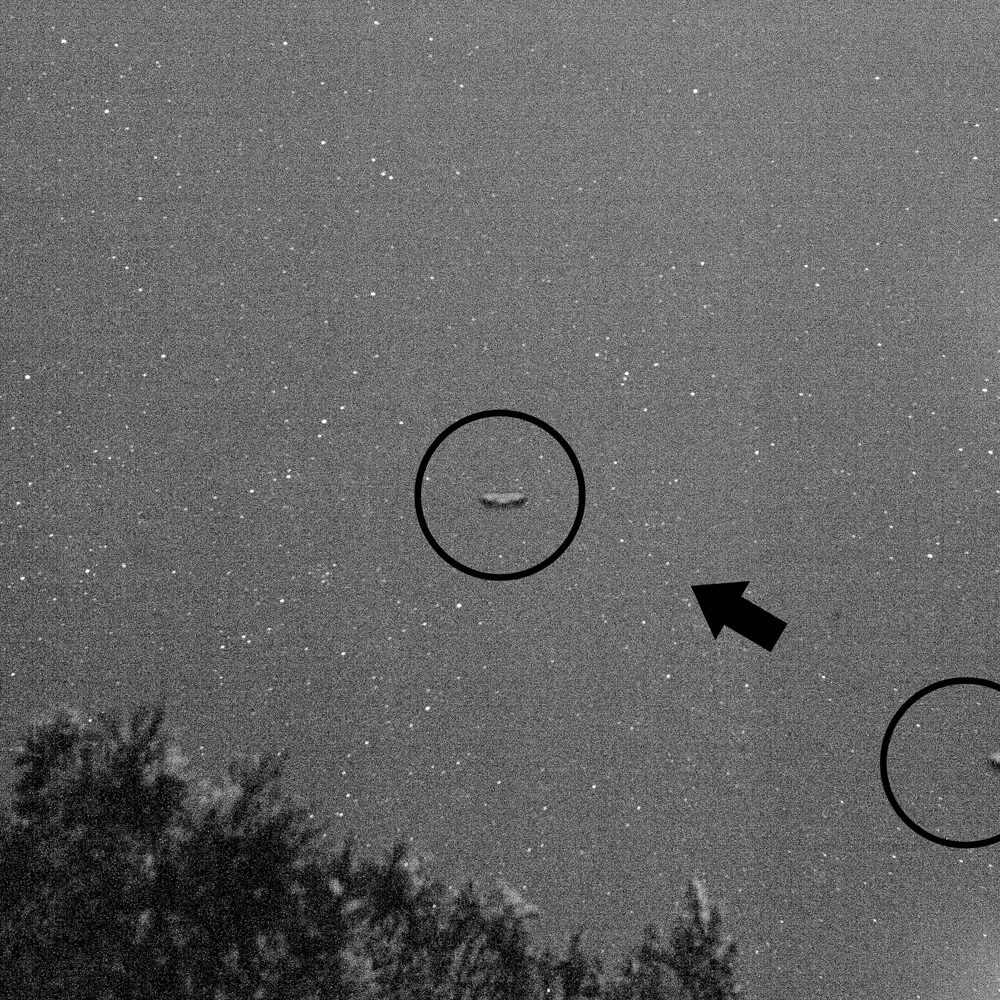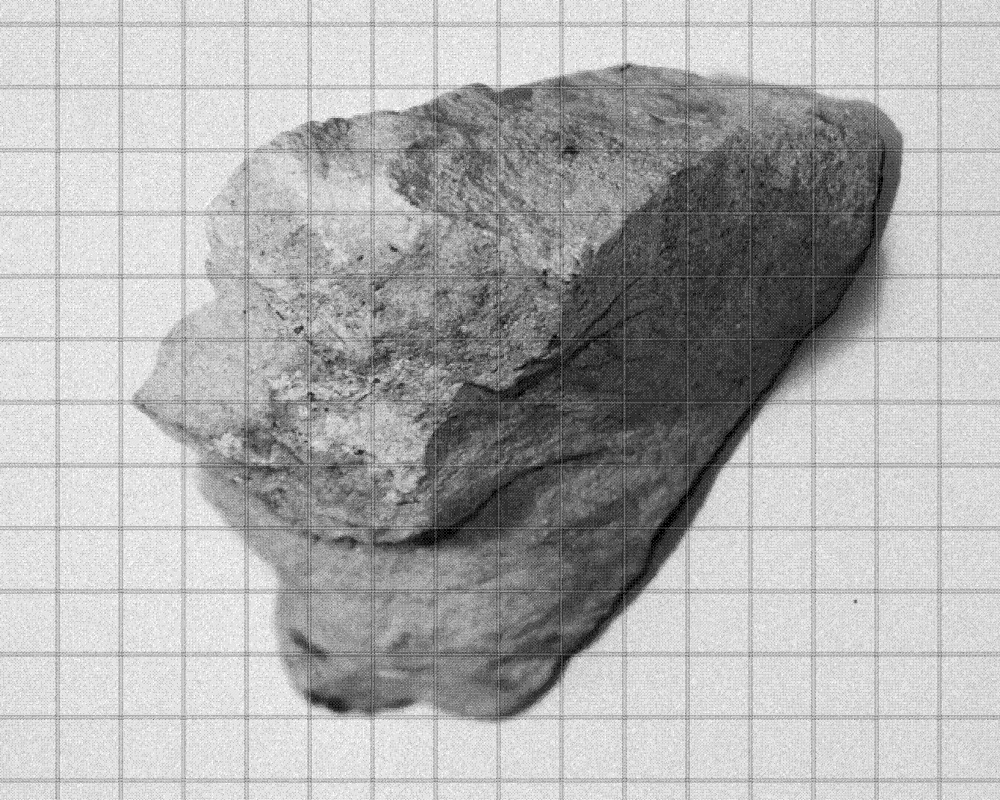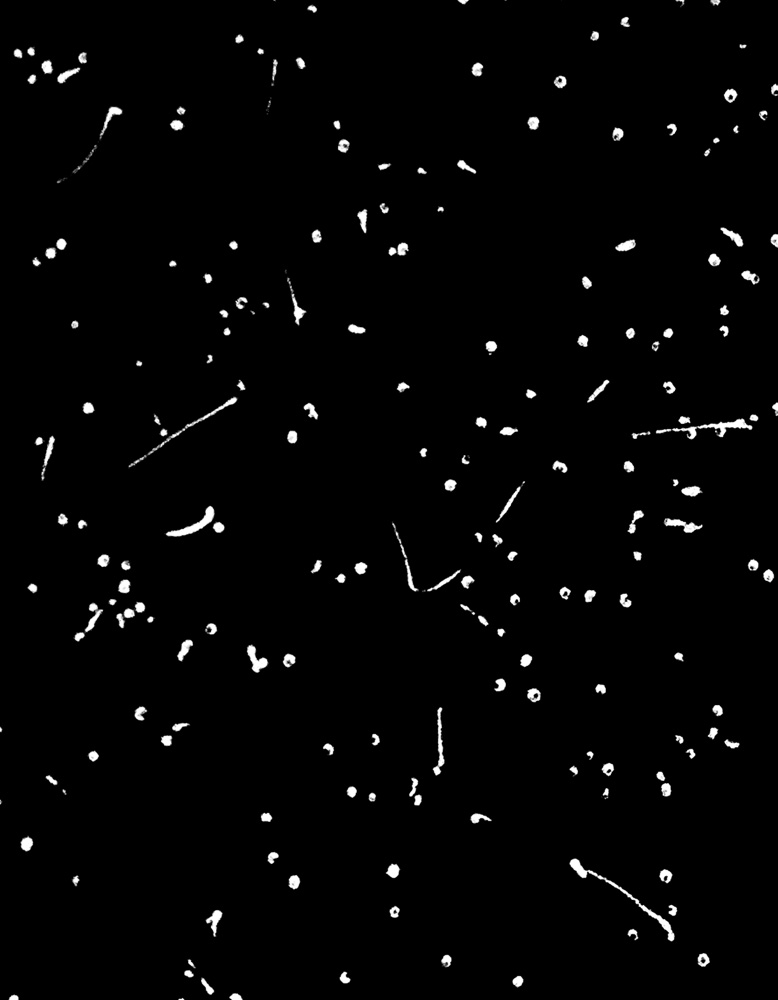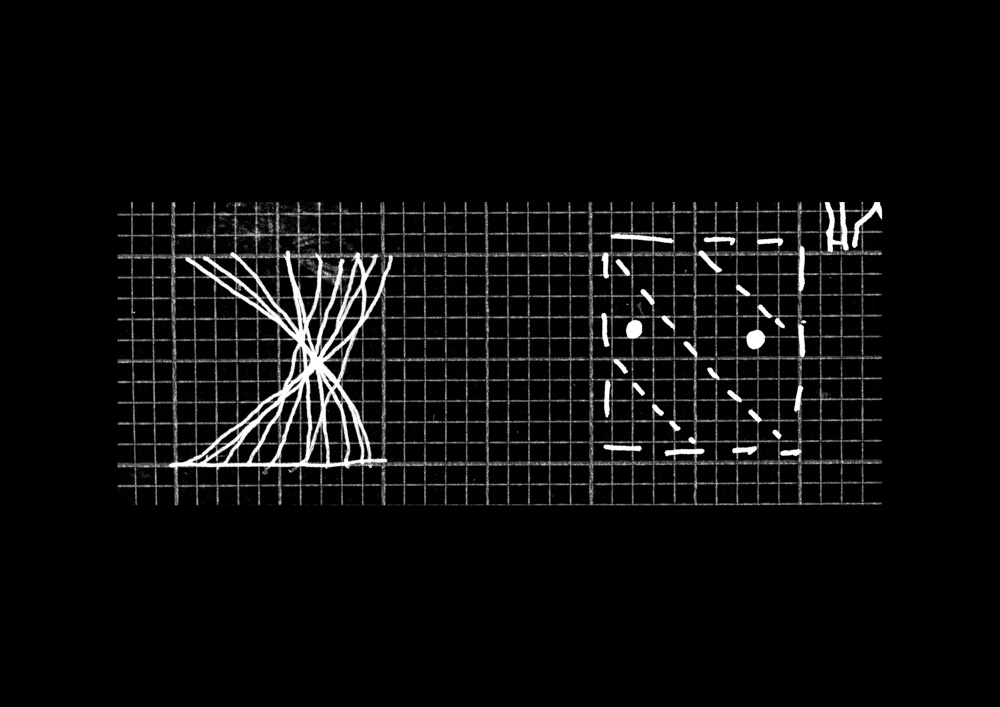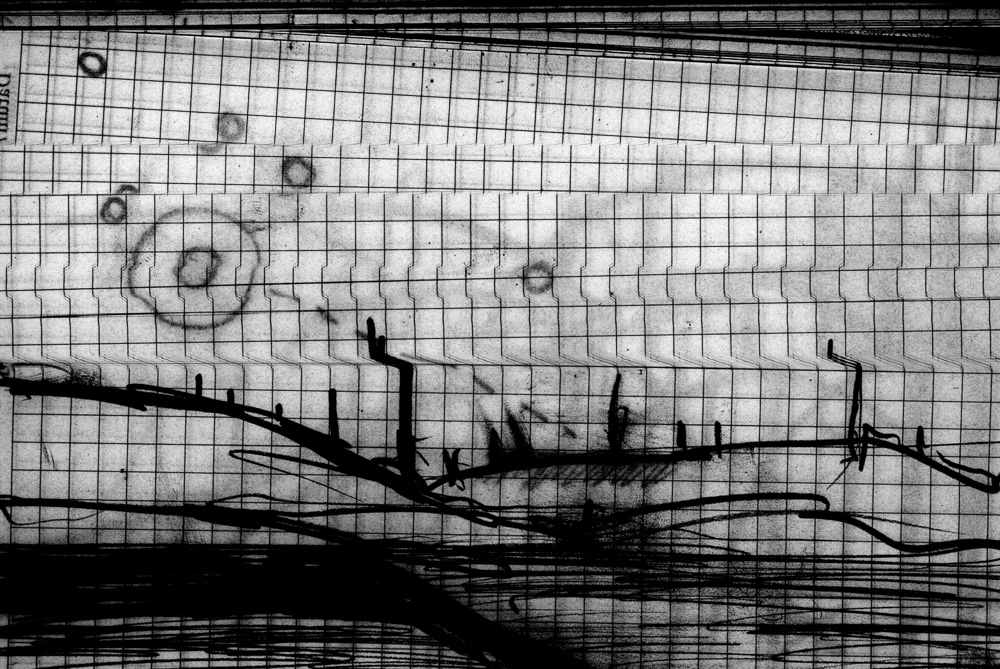Luca Tombolini
Artist Feature
Every week an artist is featured whose single image was published by Der Greif. The Feature shows the image in the original context of the series.
Alex F. Webb - Bleu
Jan 13, 2016
The Rendlesham Forest incident of December 1980 refers to a series of reported sightings of unexplained lights and the alleged landing of (multiple) craft of unknown origin (Unidentified Flying Objects) in an area of woodland next Royal Air Force base at Woodbridge, Suffolk. During the Cold War the airfield was used as a foward base by the US Airforce. Blind Landing Experimental Unit [BLEU] is a reimagining of the 'Rendlesham Forest Incident,' (also known as ‘Britain’s Roswell’) that examines both the ‘official’ record of events alongside the various conflated accounts and conspiracy theories that have emerged in the time since. The work is comprised of a variety of ‘types’ of image that are derived from visual vernaculars associated with science and the military. BLEU explores themes of nuclear paranoia and rural mythology in relation to our understandings of evidence, classification and traditional perspectives of the otherworldly.
Artist Blog
The blog of Der Greif is written entirely by the artists who have been invited to doing an Artist-Feature. Every week, we have a different author.
Published in:
»Guest-Room Bruno Ceschel«
Maritime
Jan 19, 2016 - Alex F. Webb
Felixstowe is Britain’s largest container port, located at the junction of the rivers Stour and Orwell in Suffolk, and overlooked by Landguard Point, site of the last attempted invasion of England in 1667. Now a constant flow of the world’s largest container ships enter and leave the port through the dredged channel off the point. In collaboration with Will Webb I have been making pictures here for the last 12 months; the beginnings of a project on the shipping industry and the environment in which it operates. willwebb.co.uk
Toby Glanville – Portrait
Jan 18, 2016 - Alex F. Webb
My book BLEU marked the first publication under my new imprint WEBB. I am currently working on a new book of photographs by British photographer Toby Glanville. Toby's photographs, often shot in the square format, display various labourers of differing trades. They offer an unflinching depiction of people often near or in their place of work. The book will be released at some point later this year. tobyglanville.com
Estimate of the Situation
Jan 15, 2016 - Alex F. Webb
In November 2015 an exhibition of works was held at Webber Gallery Space. Below is the accompany text for the show. The images shown here are an expansion of the work contained in the book, alongside some install pictures. Through three years of his work, Alex F. Webb has increasingly focused on the land of the east coast of England, particularly Suffolk, an area known for its rural charm but with a rich history of military experimentation. Taking sites of uncertain access as a starting point, Webb has explored the ways in which individuals challenge and consider orthodox explanations of extra-ordinary occurrences. In particular, Blind Landing Experimental Unit [BLEU], the subject of Webb’s book and installation at Webber Represents, focuses on The Rendlesham Forest Incident of December 1980. An area of woodland next to the former Royal Air Force Base at Woodbridge, Suffolk, in which there were a number of reported sightings of craft of unknown origin (Unidentified Flying Objects). The incident has since become the focus of various allegations concerning coverups by the Police and the MoD, whilst being widely dismissed as a hoax. Presented as both a book and as an installation, BLEU acts as a dossier to the process of investigating The Rendlesham Incident. Process is emphasised over conclusion, suggesting that what is important is the way in which we perceive the worldly as otherworldly, in turn arguing that individual interpretation is just as, if not more, valuable than official explanation. BLEU is insistently anti-narrative, encouraging us through the feel of the photographs to understand perception as subjective but of incredible worth. Webb encourages us to understand accumulation as an end in and of itself, interpretation is postponed continuously so that the images remain persistently uncanny, challenging our desire to form a clean-cut story surrounding the incident itself.The images resist a documentary approach, instead blending formal content and subject matter to question how it is that we perceive the flat image in a three dimensional world. "Time and again, as one walks across the wide plains, one passes barracks, gateways and fenced-off areas where, behind thin plantations of Scots pines, weapons are concealed in camouflaged hangars and grass-covered bunkers, the weapons with which, if an emergency should arise, whole countries and continents can be transformed into smoking heaps of stone and ash in no time. Not far from Orford, and already tired from my long walk, this notion took possession of me when I was hit by a sandstorm. I was approaching the eastern fringe of Rendlesham Forest. Suddenly, in the space of a few minutes, the bright sky darkened and a wind came up, blowing the dust across the arid land in sinister spirals. The last flickering remnants of daylight were being extinguished and all contours disappeared in the greyish-brown, smothering gloom that was soon lashed by strong, unrelenting gusts. As darkness closed in from the horizon like a noose being tightened, I tried in vain to make out, through the swirling and ever denser obscurement, landmarks that a short while ago still stood out clearly, but with each passing moment the space around became more constricted. Even in my immediate vicinity I could soon not distinguish any line or shape at all. When the worst was over, the wavy drifts of sand that had buried the broken timber emerged from the gloom. I crawled out of the hollow that had formed around me like the last survivor of a caravan that had come to grief in the desert. A deathly silence prevailed. There was not a breath, not a birdsong to be heard, not a rustle, nothing. And although it now grew lighter once more, the sun, which was at its zenith, remained hidden behind the banners of pollen & dust that hung for a long time in the air. This, I thought, will be what is left after the earth has ground itself down." W. G. Sebald
Battle of Los Angeles
Jan 14, 2016 - Alex F. Webb
href="https://dergreif-online.de/www/wp/wp-content/uploads/2016/01/maxresdefault.jpg"> This photograph serves as a precursor and introduction to my project Blind Landing Experimental Unit (BLEU).
Sometime between February 24th / 25th 1942 an Unidentified Flying Object allegedly flew over Los Angeles. Anti-aircraft weapons were fired and fighter jets scrambled to try and intercept the craft, initially thought to be Japanese Warplanes on the offensive. Although never truly resolved most evidence points to a meteorological ballon gone astray as stated by the United States Office of Air Force History in a statement released in 1983, that also suggests the event occurred due to "war nerves."
Despite the fact this image was probably retouched and enhanced, it is generally accepted to be an actual depiction of the events from that night. It is one of the earliest 'UFO photos' and forms part of the aesthetic bedrock for the swathes of lo-fi UFO imagery still generated to this day.
What fascinates me about this image is not only its unknowability, but that it predates most alien films yet looks remarkably filmic in its own right. The searchlights piercing through the rather artificial horizon line are reminiscent of the spotlights that adorn film premieres on Hollywood Boulevard.
Whilst I discovered this image after completing BLEU it still holds resonance to the nature of the project and what the work is trying to achieve.
This photograph serves as a precursor and introduction to my project Blind Landing Experimental Unit (BLEU).
Sometime between February 24th / 25th 1942 an Unidentified Flying Object allegedly flew over Los Angeles. Anti-aircraft weapons were fired and fighter jets scrambled to try and intercept the craft, initially thought to be Japanese Warplanes on the offensive. Although never truly resolved most evidence points to a meteorological ballon gone astray as stated by the United States Office of Air Force History in a statement released in 1983, that also suggests the event occurred due to "war nerves."
Despite the fact this image was probably retouched and enhanced, it is generally accepted to be an actual depiction of the events from that night. It is one of the earliest 'UFO photos' and forms part of the aesthetic bedrock for the swathes of lo-fi UFO imagery still generated to this day.
What fascinates me about this image is not only its unknowability, but that it predates most alien films yet looks remarkably filmic in its own right. The searchlights piercing through the rather artificial horizon line are reminiscent of the spotlights that adorn film premieres on Hollywood Boulevard.
Whilst I discovered this image after completing BLEU it still holds resonance to the nature of the project and what the work is trying to achieve.


